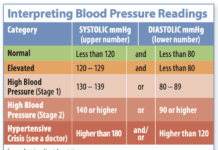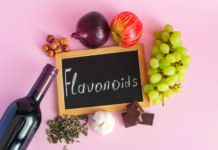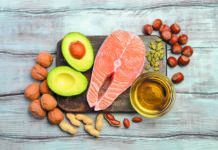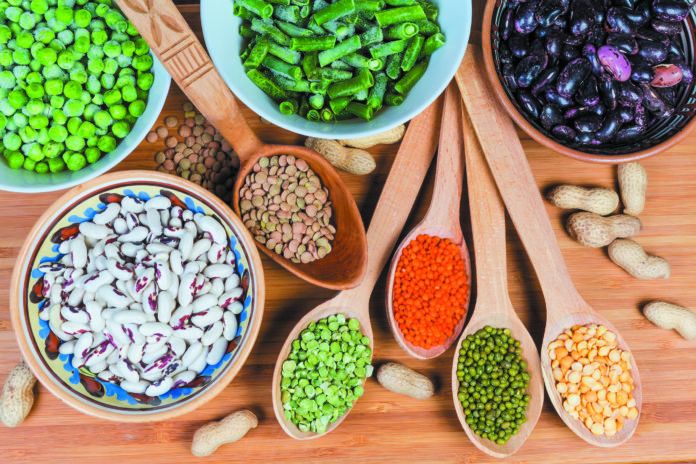Replacing some (or all) animal protein with plant protein; eating more vegetables; and choosing naturally fiber-rich foods in place of refined carbohydrates are all excellent ways to improve the healthfulness of your dietary pattern. Eating more legumes helps you do all three! Legumes are inexpensive, versatile, tasty…and underutilized. The many shapes, colors, and sizes can add variety to everyday meals.
What is a Legume?
Legumes are plants from the Fabaceae or Leguminosae family. Beans, peas, and lentils are all seeds of legume plants. When these are dried, they are sometimes referred to as pulses. “Many people do not realize that green peas and green beans are, botanically speaking, legumes,” says Nicola M. McKeown, PhD, an associate professor at Tufts Friedman School of Nutrition Science and Policy. “Peanuts are legumes as well.”
The latest Dietary Guidelines for Americans (DGA) suggest U.S. adults eat at least three cups of legumes per week (or about one half-cup per day) as part of a healthy dietary pattern. According to population surveys, adults are consuming a third less than the recommended value.
Try these tips to include more legumes (beans, peas, and lentils) in your diet.
- Eat more legumes! Beans, peas, and lentils are an inexpensive source of protein, dietary fiber, and nutrients. They are great as a replacement for some or all animal protein in a meal, or as part of side dishes, salads, and snacks. Strive to eat three cups per week, or half a cup each day.
- Choose either dried or canned: They are equally nutritious, so use what suits your lifestyle.
- Rinse canned beans: Rinsing removes about 40 percent of the sodium. Purchase no-salt or low-sodium varieties when
Nutrition: Legumes have a unique nutrient profile that fits them neatly into both the protein and the vegetable food groups. They are an excellent source of plant protein, not only because they are a sustainable protein source compared to animal-based foods, but also because they have a high content of the essential amino acid lysine compared to other plant foods. “Soybeans stand out,” says McKeown, “because they are one of the few plant foods that provide all the essential amino acids in the amounts your body needs.” Most plant foods are low in at least one essential amino acid. Although it used to be thought that vegetarians and vegans had to pair legumes with grains (as in rice and beans) at every meal to get all the necessary amino acids, it is now understood that a variety of plant foods eaten throughout the day works just as well.
“Legumes are high in dietary fiber and rich in micronutrients, specifically B-vitamins, selenium, potassium, zinc, and vitamins E and A,” says McKeown. “A half cup of legumes delivers, on average, seven grams of dietary fiber, which is a third of the recommended daily value. Importantly, they contain both insoluble and soluble fiber.” Soluble fiber helps decrease blood cholesterol levels and controls blood sugar, and insoluble fiber helps digestion and regularity.
Concern has been raised that beans and other legumes contain so-called “antinutrients” that reduce their nutritional value or may even cause harm if ingested. Antinutrients are compounds that bind to nutrients (such as calcium) and prevent their absorption in the body. The presence of these compounds may reduce the nutritional value somewhat, but legumes are still a nutritious choice. According to a review of studies published in a 2020 issue of the journal Food Production, Processing and Nutrition, soaking and cooking significantly reduce the levels of antinutrients, as do processing treatments including milling, germination, and fermentation. As for potential harms of antinutrients: except for undercooked kidney beans, bean antinutrients have not been shown to cause any ill effects in humans.
Fiber feeds beneficial gut bacteria, which is good for health, but can create intestinal gas (flatulence). Discarding soaking liquid (or liquid from canned beans) and increasing bean intake slowly can minimize gas production.
Make the Switch: One of the world’s most commonly consumed foods, legumes have been a staple in many traditional cuisines for over 1,000 years. Because legumes are both a vegetable and a protein, they are easy to include in any type of meal, from the traditional (like rice and beans) to the trendy (think brownies) for a quick boost of protein, fiber, and nutrients. They are also extremely cost-effective, dried or canned. Here are some simple ways to add beans to every meal:
Appetizers: hummus or other bean dips; salsa with black beans
Legume-based main dishes: Bean and egg breakfast wrap; rice and beans; edamame or tofu stir fry; sautéed beans and greens; pasta with bean puree or whole beans and veggies (try Italian pasta fagioli); bean chili or soup; bean burritos; bean-based burgers; Indian dal (lentils); French cassoulet; falafel; hummus wraps or sandwiches; or substitute legumes for some or all of the meat in burgers, chili, and stews
Sides and salads: three bean salad; other bean- or lentil-based salads (with or without whole grains); green salad with beans; pasta salads with beans; baked beans; refried beans
The benefits of legumes extend beyond their positive impact on human health. As crops, these nitrogen-fixing plants have been used for centuries to improve the quality of soil. They also adapt well to adverse environments, are highly resistant to disease and pests, and need less water than grains. All-in-all, choosing legumes in place of less healthful foods is a great way to improve your diet quality—and your health.
Follow these steps to prepare dried beans*:
Soak
- Overnight: Add enough cool water to cover beans completely. Soak at least eight hours or overnight. Drain soaking water and rinse with cool water.
or
- Quick: Add three cups of water for each cup dried beans. Bring to a boil for two minutes. Cover and remove from heat to stand for one hour. Drain soaking water and rinse.
Cook
- Combine two cups water to every cup of beans and bring to a boil.
- Simmer on low for one to two hours. Test periodically, as large beans will take longer to cook.
*One-half cup dry beans equals about one cup cooked. Canned beans are ready to use. Look for those labeled reduced sodium, and rinse well before using.
























So glad to see your recommendation of increasing legumes (and other plant proteins) to replace some (or all) animal proteins. So much healthier for us…. and much more sustainable for the environment.